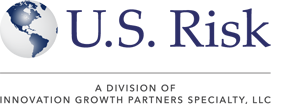Insights
 How Technology is Shaping Healthcare
How Technology is Shaping Healthcare
September 2, 2022
Few industries have been revolutionized by technological developments quite the way that healthcare has. Technology has become a central feature in many aspects of the industry, making care more accessible, versatile, and practical. Technology has made preventive care an option for people who otherwise would not have it. Understanding how technology is helping to shape the future of health and medical treatment is essential. Here are some ways technology takes a front-row seat in the health and wellness industry.
Online Care Access
There are various types of healthcare that are now available in a virtual format. Remote access to care providers, chatbots, digital prescription transmission, and even online patient portals for patients to view test results and records have all made care easier to access, more versatile for demanding schedules, and available for those with transportation, insurance, or other logistical challenges. Some specialists even offer fully remote services, including virtual psychotherapy and remote speech support services.
Improved Patient Management Software
Information is critical in the medical field, and doctors need easy access to medical histories, test results, and vital signs. With advancements in healthcare have also come improvements in patient management software. Doctors now have a patient’s full medical history immediately accessible with just a few clicks. It eliminates the risk of lost medical chart pages, misplaced papers, and messy handwriting. Everything is digital and accessible from anywhere.
Expanded Treatment Options with 3D Printing
While 3D printing is still new technology, that doesn’t mean it doesn’t have a place in the medical industry. All sorts of applications can benefit from 3D printing, including custom fixtures and components for medical devices. Healthcare technology is evolving so rapidly that even some conceptual projects for 3D-printed organs and skin grafts are being developed and evaluated for future applications.
Predictive Risk Diagnosis
Another excellent tool for medical care providers is computer-assessed risk determinations. With the right technology, a patient’s full medical history can be assessed against synthesized risk data and statistics to determine actual risk factors associated with certain illnesses or other similar health risks. It may allow for proactive or preventive care that wasn’t possible in the past, potentially preventing some conditions through preventive intervention.
With more technological advancements every day, it’s no surprise that the medical field is finding new and improved ways to provide care using these resources. It’s important to remember that innovation also brings risk. Make sure your clients’ medical practices are protected against any potential risk factors with the right insurance coverage, and then embrace the changes technology has brought to the field. ◼

